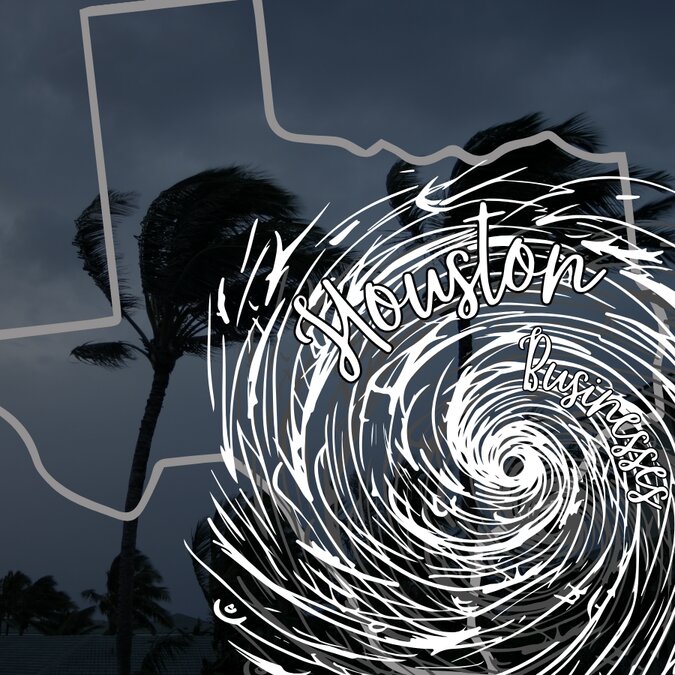 The 2025 Atlantic hurricane season officially begins this weekend, running from June 1 through November 30. For businesses in Texas, August and September are historically the most active—and potentially most dangerous—months. Now is the time to prepare your operations, protect your assets, and ensure your business continuity plans are up to date.
The 2025 Atlantic hurricane season officially begins this weekend, running from June 1 through November 30. For businesses in Texas, August and September are historically the most active—and potentially most dangerous—months. Now is the time to prepare your operations, protect your assets, and ensure your business continuity plans are up to date.
2025 Hurricane Forecast: A Season to Take Seriously
The NOAA Climate Prediction Center is forecasting an above-normal 2025 hurricane season, citing warmer than average Atlantic Ocean temperatures and reduced wind shear as contributing factors. Here’s what the NOAA's official outlook expects for the 2025 hurricane season:
- 13 to 19 named storms (winds of 39 mph or higher)
- 6 to 10 hurricanes (winds of 74 mph or higher)
- 3 to 5 major hurricanes (Category 3 or higher, with winds of 111 mph or greater)
These predictions come with a 70% confidence level, underscoring the elevated risk.
Colorado State University’s Tropical Weather & Climate Research group echoes this concern, forecasting 17 named storms, 9 hurricanes, and 4 major hurricanes. They also project 85 named storm days, 35 hurricane days, and 9 major hurricane days—somewhat above historical averages. Even storms that don't make landfall can still disrupt coastal and inland communities for extended periods.
For perspective, the 30-year average (1991–2020) includes just 14.4 named storms, 7.2 hurricanes, and 3.2 major hurricanes—making 2025’s outlook above-average.
Why Hurricane Preparedness Matters for Small Businesses
While hurricanes affect communities across the board, small and medium-sized businesses (SMBs) often suffer disproportionately. After Hurricane Harvey in 2017, for example, nearly half of the businesses in the Lake Houston area reported damages. FEMA estimates that 40% of small businesses that close due to a natural disaster never reopen, and 67% that do reopen fail within two years.
But it’s not just direct damage that causes harm:
- Disrupted supply chains
- Employee displacement and labor shortages
- Power outages and internet downtime
- Economic slowdowns in impacted regions
These ripple effects can paralyze operations for days—or even weeks—without the right plan in place.
The Business Costs of Inadequate Preparation
Failing to plan for hurricane season can lead to:
- Lost revenue and productivity: Without access to equipment or utilities, your business can't operate effectively.
- Reputational damage: Customers may lose trust in your reliability if your business struggles to respond.
- Lower employee morale: Recovery efforts can overwhelm your staff and strain internal operations.
- Competitive disadvantage: While you’re offline, competitors may step in to meet your customers’ needs.
Can your business function for 24–48 hours without computers, communications, or utilities? What about longer? If not, the time to act is now.
How to Prepare Your Business for Hurricane Season
A strong disaster recovery and business continuity plan can help reduce your exposure to financial loss and downtime. At a minimum, your plan should cover:
- 🔋 Backup power and data storage solutions
- 💻 Remote work readiness and secure communications
- 📦 Supply chain contingency strategies
- 🚨 Employee safety and emergency protocols
Building resilience now will help ensure your business stays operational during and after a hurricane—not scrambling to recover when it’s too late.
Be Proactive, Not Reactive
The 2025 hurricane season is shaping up to be a dynamic one. But with preparation, your business doesn’t have to be caught off guard. Download our free Natural Disaster Survival Guide for Businesses to get started on your plan.
👉 Click here or call (281) 646-1200 to schedule your 15-minute consultation with us so we can make sure your business is ready for whatever this season brings!


